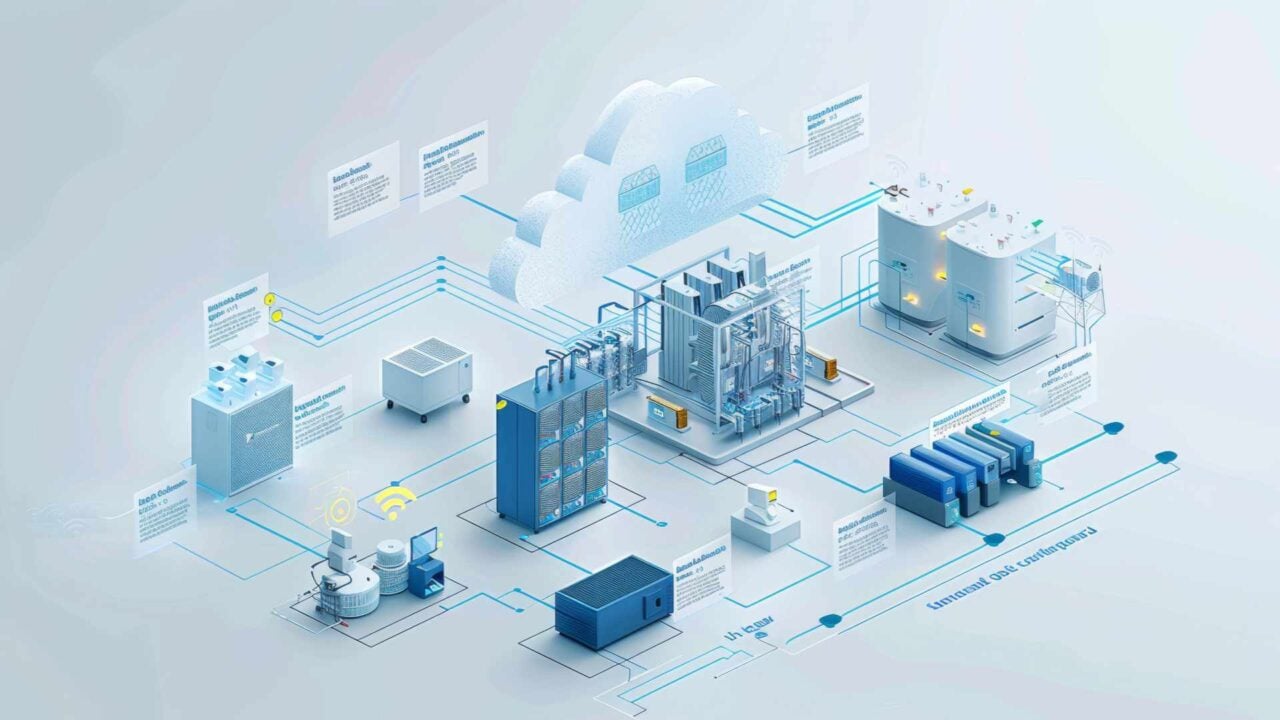In an increasingly fast-paced and uncertain business environment, organizations depend on their ability to innovate and adapt more than ever before. To keep their businesses competitive, Infrastructure and Operations (I&O) leaders all over the world look to leverage the potential of the cloud. Ideally, this subject should be addressed sooner rather than later: according to the analyst firm Gartner®, “By 2028, cloud computing will be a necessity for business competitiveness. Business outcomes will depend on an enterprise’s ability to execute its cloud computing strategy.”1.
For those in the messaging and fax space, that comes as no surprise. Without a centralized, simplified cloud fax solution, I&O teams face more work, increased complexity, and significant limitations. The core of these issues is on-premises fax server infrastructure. With our decades of experience in the digital fax market, we have highlighted how I&O leaders (and enterprises as a whole) can transform and digitalize their business by removing on-premises fax servers.
Improved centralization and less work and complexity for IT
In complex fax infrastructures, each business unit may have its own independent fax server setup, leading to a lack of centralized management and reporting. This massively degrades the efficiency of IT service management processes, resulting in heightened efforts for monitoring, controlling, and updating entire fax systems.
Complex integrations also tend to lack comprehensive analytics and reporting capabilities. IT management often struggles to collect and analyze data on fax usage, trends, or performance metrics. This limits their ability to optimize resources and identify potential issues.
In a modern cloud fax setup, embedded advanced analytics and reporting capabilities empower IT management. With valuable insights into fax usage patterns, IT professionals are enabled to identify inefficiencies and optimize their fax communications, reducing system complexity. These analytics enable informed decision-making, resource optimization, and identification of potential issues — before they impact operations.
Limitless scalability with low operations complexity
With a fragmented fax setup, permanently up- and downscaling fax server resources to meet changing business demands can be mission: impossible. Adding or removing fax servers, integrating with other systems, or expanding capacity is complex and time-consuming, resulting in delays and potential service disruptions.
Managing and supporting multiple fax infrastructures requires ongoing efforts for IT teams. Maintenance tasks such as software updates, patches, and troubleshooting cannot be streamlined, leading, once again, to increased efforts and potential service disruptions.
In 2024, skilled personnel with in-depth knowledge of legacy fax infrastructure is harder and harder to find. And training new workers on ever more outdated hardware is a task no one wants to take on. Maintaining a perfectly scaled environment with adequate support is a difficult needle to thread.
With cloud solutions, the vendor takes care of updates, patches, and troubleshooting, freeing up IT resources from routine fax server maintenance tasks. Dedicated expert support and service management teams are on hand throughout the customer lifecycle, from onboarding through implementation, and beyond. Their expertise and guidance help to overcome skill gaps, ensuring a smooth transition to the cloud and putting to rest concerns about any lack of in-house know-how.
True enterprise cloud fax vendors eliminate the need for additional hardware and software investments, even when scaling fax capacity. As business needs evolve, successful cloud fax solutions enable seamless, dynamic fax capacity fluctuations, ensuring constant optimal resource use. This saves costs, and, in parallel, eliminates the complexities of managing multiple fax servers. As a result, IT management can focus more on strategic initiatives than day-to-day operations.
Superior integration and admin experience
Implementing systems scattered across different departments, offices, or regions is a time-consuming mission. Nevertheless, integration with enterprise applications such as document management or CRM systems is essential to effectively supporting business processes.
Integrating each fax server with business applications typically requires bridging every application’s own interface, formats, and limitations. This makes it challenging for IT managers to achieve seamless data exchange and easily enable workflow automation. Also, every component usually has its own management portals, administration tools, or even old-fashioned log files for tracking fax performance, managing users, and handling incidents and change requests. These inconsistencies in the admin experience and lack of standardization frustrate admins and hinder productivity.
Cloud fax solutions integrate seamlessly with existing enterprise systems, including document management, CRM databases, ERP platforms, and business interfaces from vendors such as SAP, Epic, and Microsoft. Pre-built connectors, standard APIs, and even customized integration options make it easy to connect and streamline fax workflows across different systems.
These direct integrations, as well as intelligent data extraction and workflow techniques based on them, drive the removal of paper and manual processes. By eliminating manual steps and increasing interoperability, enterprises easily achieve higher productivity and smoother business operations.
Close security and compliance gaps
Customers need to ensure data privacy, enforce security protocols, and comply with changing regulations — tasks that are needlessly more complicated when dealing with fragmented on-premises fax servers.
Security risks and compliance challenges cascade because of decentralized infrastructures. Each server may have different security measures and protocols, making it harder to enforce consistent security policies. Ensuring data protection, audit trails, and regulatory compliance requirements such as HIPAA or GDPR becomes more cumbersome.
A complete, enterprise cloud-oriented approach ensures optimal security and compliance by providing a robust framework to protect sensitive information. This includes encryption of data in transit and at rest, ensuring the privacy and integrity of fax communications. Organizations requiring certifications such as SOC1, SOC2, ISO 27001 and PCI-DSS must select vendors with the appropriate compliance frameworks.
Retarus’ modern approach to fax
As I&O leaders consider their technology improvement roadmaps in 2024, it’s a good reminder how technology perceived as outdated can be an important, modern driver of automation. At Retarus, we strive to provide enterprises with the tools they need to effectively modernize their technology stack, in a transparent and compliant way.
We not only abide by regulations and maintain industry-leading certifications — but provide a deeper dive into reporting to close compliance gaps proactively. With the reporting transparency necessary to support regulatory compliance, Retarus’ customers can effectively mitigate regulatory violation risks. Additionally, our fax reporting provides valuable insights into fax usage patterns, enabling customers to identify inefficiencies and optimize their fax communications. And with a huge variety of pre-built connectors, integration options, and techniques to further drive intelligent workflows, Retarus Cloud Fax can be the start of superior automation processes.
1 Gartner, Cloud Computing in 2028: From Technology to Business Necessity, by Dennis Smith, 25 September 2023. GARTNER is a registered trademark and service mark of Gartner, Inc. and/or its affiliates in the U.S. and internationally and is used herein with permission. All rights reserved.




